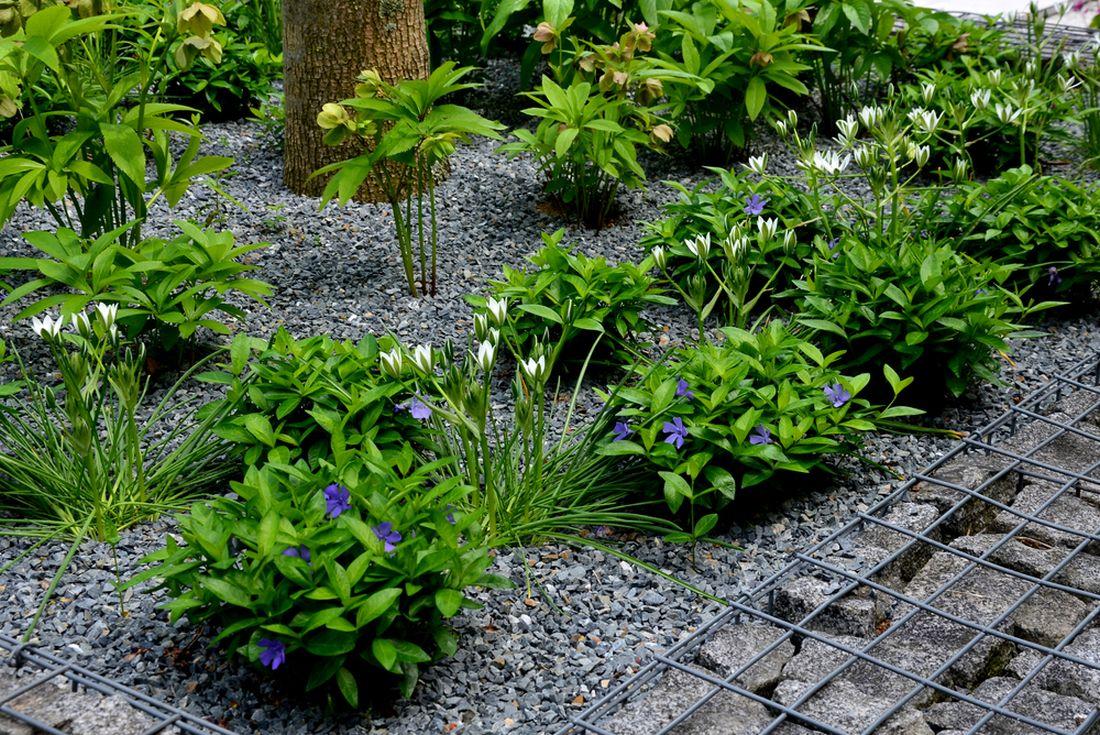
Which plants fit in the gardens into dry shade
show 10 photos
Everyone can imagine what is dry and what is shade. But it's not that simple. Another shade is under deciduous trees, another under evergreen conifers, another in a secluded corner of the garden and another on the north-facing part of the plot. Tree crowns (especially conifers) also form a strong rain shadow and this is related to drought. At the same time, even drought has several degrees. And to make matters worse, pH and tree roots also come into play.
Shadow darkness and stability
Under stands of deciduous trees, the shadow is much lighter and not even stable. There are therefore better conditions for planting plants. Not to mention that the soil pH is different under evergreen conifers, not only is the shade dark and stable under them. Decomposing needles acidify the soil. And it also depends on the timing of the shade, for example the first spring perennials and spring bulbs will use the spring sun's rays even before the deciduous trees above them start to turn green and block the sun. In addition, they usually still have a lot of water here at this time.
Garden chervils (Source: Shutterstock)
Plants intended for shade usually have higher humidity requirements
However, in any case, there is a shaded place in every garden. And what if it's still dry here. Then, even hollyhocks, ferns and mosses will not thrive on the site. It is simply true that the assortment of plants intended for the shade mainly includes species with higher requirements for moisture, i.e. fresh and wetter soil, some of these species even belong to the mud.
Lesser periwinkle (Source: Shutterstock)Root competition and acidic pH
What's more, there is considerable root competition under the woody plants that shade the plants, there is usually just an area it is strongly overgrown with tree roots. And they tend to be quite greedy. For water and nutrients. We often have no choice but to move the planting to the edge of the circular plan of the crown of the tree. And we repeat again, a huge problem is the frequent acidity of the soil under trees, and this does not suit most plant species intended for gardens. In addition, conifer needles in particular decompose quite slowly and the soil is therefore also poor in nutrients (humus). it is therefore better to prefer the proximity of deciduous trees, where we can even use the decaying leaves, which enrich the plants with nutrients. Leaves usually decompose much faster than needles, and their decomposition does not create an acidic environment.
Heart-leaved bergenia (Source: Shutterstock)The solution is to layer the substrate
But we can help even in worse conditions. And this even in the case of strongly rooted soil. It is enough to place a layer of new soil on the cleaned surface (in the case of grass, at least the sod must be turned over, it will decompose over time) and the resulting bed should be bordered so that the material does not "spread" to our width. Newly planted plants will not compete with woody plants (or vice versa). A layer approx. 20 cm thick of light, well-permeable substrate for water and air is sufficient. In the case of planting perennials, a mixture of horticultural substrate, leaf litter and gravel or garden soil, leaf litter or compost and gravel is ideal. Such a layer will make rooting much easier for perennials and reduce the risk of root competition. Even a dry situation can be solved, either by regular watering or by installing a more sophisticated dripper.
Don't expect a rich selection of species
When you start looking for shade-friendly perennials, don't expect a rich selection. The least demanding are the yellow-flowered cattails (Waldsteinia ternata and W. geoides). These potted plants not only cope well with the shade, but also with drought, they can even be planted in a sunny and drying place. They are simply durable universals. The trifolium grows quickly and can even replace the grass, while the cocoon is characterized by its tufted growth. We can therefore control it much better in plantings. If we simply want expansion, we choose the first type, and if we require a more varied mix of perennials and control of the area, we choose the second, tufted.
Pomegranate (Source: Shutterstock) Soft lungwort (Source: Shutterstock)Other suitable species for shady and drier places are the bitter gourd (Epimedium), which is sold in tufted and protruding form (large-flowered bitter gourd (Epimedium grandiflorum) and red bitter gourd ( Epimedium rubrum)), garden cyclamen (Cyclamen), lesser periwinkle (Vinca minor), Corsican hellebore (Helleborus argutifolius), bergenia cordifolia (Bergenia cordifolia), spring pea (Lathyrus vernus) and soft lungwort (Pulmonaria mollis).
Large-flowered licorice (Source: Shutterstock) Red licorice (Source: Shutterstock) Corsican honeysuckle (Source: Shutterstock) Spring pea (Source: Shutterstock)






